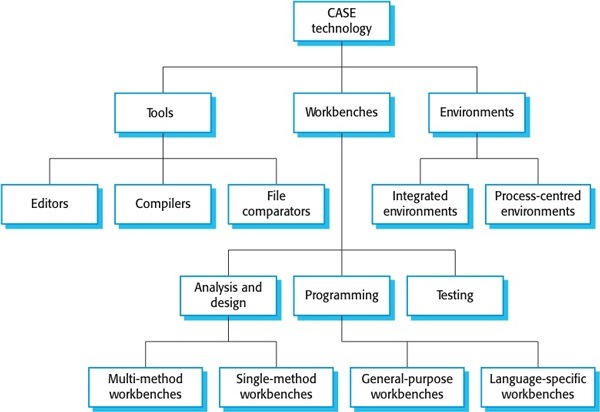
Fuggetta (1993), proposes that CASE systems should be classified in three categories:
The diagram below illustrates this classification and shows some examples of these different classes of CASE support. Many types of tool and workbench have been left out of this diagram.

Figure 1: Tools, workbenches and environments.
This classification was developed in the 1990s and, in my view, is still useful. However, the term 'workbenches' is not now much used andthe term 'environments' has been extended to cover sets of tools focused on aspecific process phase e.g. programming environment or requirements engineering environment.
I have classified environments in the above diagram as integrated environments or process-centred environments. Integrated environments provide infrastructure support for integrating different tools but are not concerned with how these tools are used. Process-centred environments are more general. They include software process knowledge and a process engine which uses this process model to advise engineers on what tools or workbenches to apply and when they should be used.
In practice, the boundaries between these different classes are blurred. Tools may be sold as a single product but may embed support for different activities. For example, most word processors now provide a built-in diagram editor. CASE workbenches for design usually support programming and testing so they are more akin to environments than specialised workbenches.
References
Fuggetta, A. (1993). A classification of CASE technology. IEEE Computer, 26 (12), 25-38.